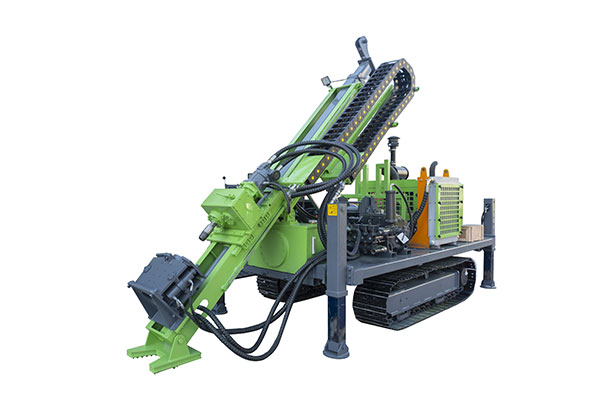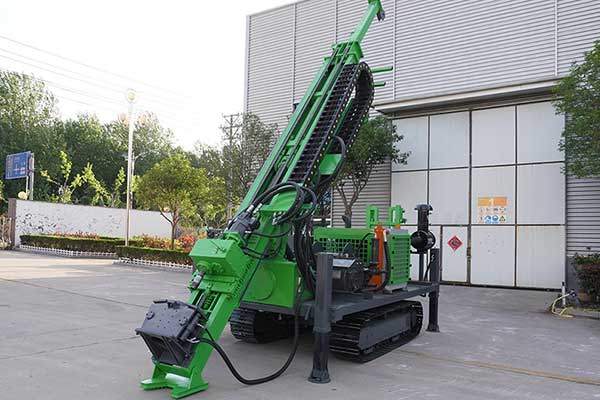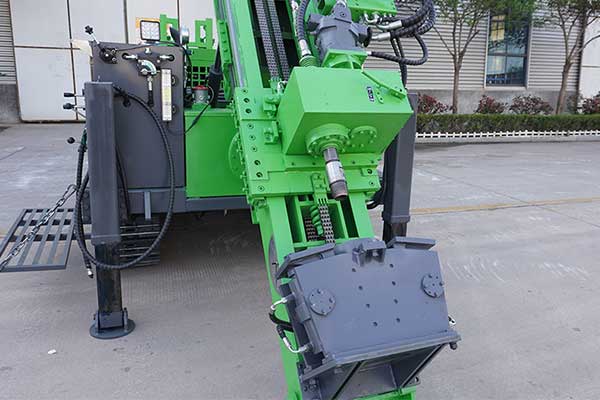What is a Core Drilling Rig? A Complete Guide
Core drilling rigs are essential tools in the construction, mining, and geological exploration industries. Whether you’re building a skyscraper, exploring mineral deposits, or taking soil samples, understanding what a core drilling rig is and how it works is crucial.
In this guide, we’ll break down everything you need to know about core drilling rigs—what they are, how they work, and their key applications.

What is a Core Drilling Rig?
A core drilling rig is a specialized machine used to drill cylindrical holes into hard materials like rock, concrete, or soil. The primary purpose of this drilling method is to extract core samples—long, cylindrical sections of the material being drilled. These core samples provide valuable information about the composition, structure, and condition of the subsurface.
Core drilling rigs vary in size and design, from handheld electric models for concrete sampling to large truck-mounted rigs for deep geological surveys.
How Does a Core Drilling Rig Work?
Core drilling rigs operate using a rotating drill bit, typically embedded with industrial diamonds, to cut through hard surfaces. Here’s a step-by-step overview of how they work:
- Setup – The rig is positioned over the desired drilling spot.
- Drilling Begins – The bit rotates and drills into the surface, creating a cylindrical hole.
- Core Extraction – As the bit advances, the inner tube captures a cylindrical core.
- Core Removal – The drill is stopped, and the core sample is extracted for analysis.
Some rigs use hydraulic systems for deeper drilling, while others may use pneumatic or electric power depending on the application.

Types of Core Drilling Rigs
Depending on the application, there are several types of core drilling rigs:
1. Surface Core Drilling Rigs
Used for mineral exploration on land. They are mobile, easy to set up, and ideal for shallow to medium-depth drilling.
2. Underground Core Drilling Rigs
Designed for narrow tunnel operations, often used in underground mining. They are compact and maneuverable.
3. Hydraulic Core Drilling Rigs
Powerful and efficient, these rigs use hydraulic systems to deliver high torque and deep penetration.
4. Portable Core Drilling Rigs
Lightweight and easy to transport, they are suitable for small-scale geological surveys or remote locations.
Key Applications of Core Drilling Rigs
Core drilling rigs are widely used in a range of industries. Some of the most common applications include:
- Geological Exploration – To study subsurface rock formations and locate mineral resources.
- Construction Projects – To analyze soil conditions and ensure structural safety.
- Mining Operations – To evaluate ore quality and mine planning.
- Oil and Gas Exploration – To extract samples from deep rock formations.
- Environmental Sampling – To monitor groundwater and soil contamination.

Benefits of Core Drilling
Core drilling offers several advantages over other drilling methods:
- Accurate Sampling – Provides intact core samples for thorough analysis.
- Minimal Damage – Drills precisely without causing extensive damage to the surrounding area.
- Versatility – Suitable for drilling through a variety of materials including concrete, rock, and asphalt.
Conclusion
A core drilling rig is an indispensable tool in modern engineering and exploration. Its ability to retrieve precise samples makes it a cornerstone of safe and successful construction, mining, and environmental projects. Whether you’re testing foundation conditions or exploring natural resources, understanding how core drilling rigs work can help you make better decisions and improve project outcomes.
Frequently Asked Questions (FAQs)
Core drilling extracts a cylindrical sample of material, while regular drilling creates a hole without preserving the sample.
Depending on the rig type, some core drilling rigs can reach depths of over 1,000 meters.
Yes, when operated by trained personnel and following safety protocols, core drilling rigs are safe and efficient.
Core drilling rigs can drill through a wide range of materials including concrete, asphalt, granite, limestone, clay, and other geological formations.
The drill diameter is chosen based on the project requirements. Typical core diameters range from 25 mm to over 150 mm, depending on the needed sample size and depth.

